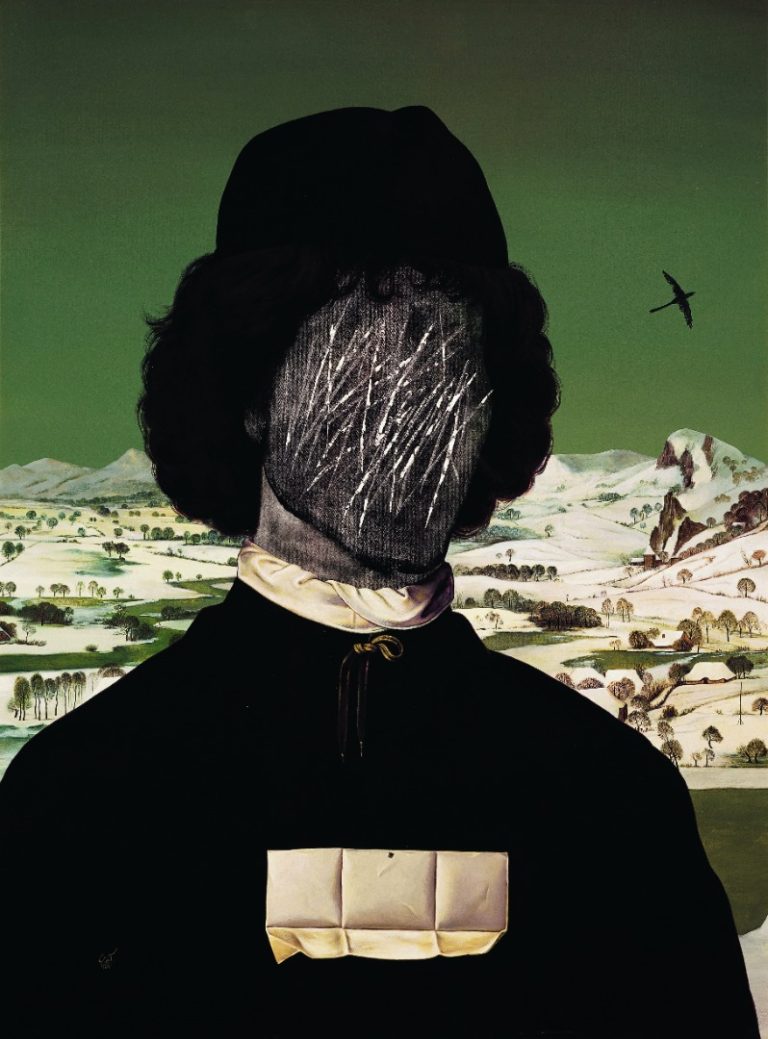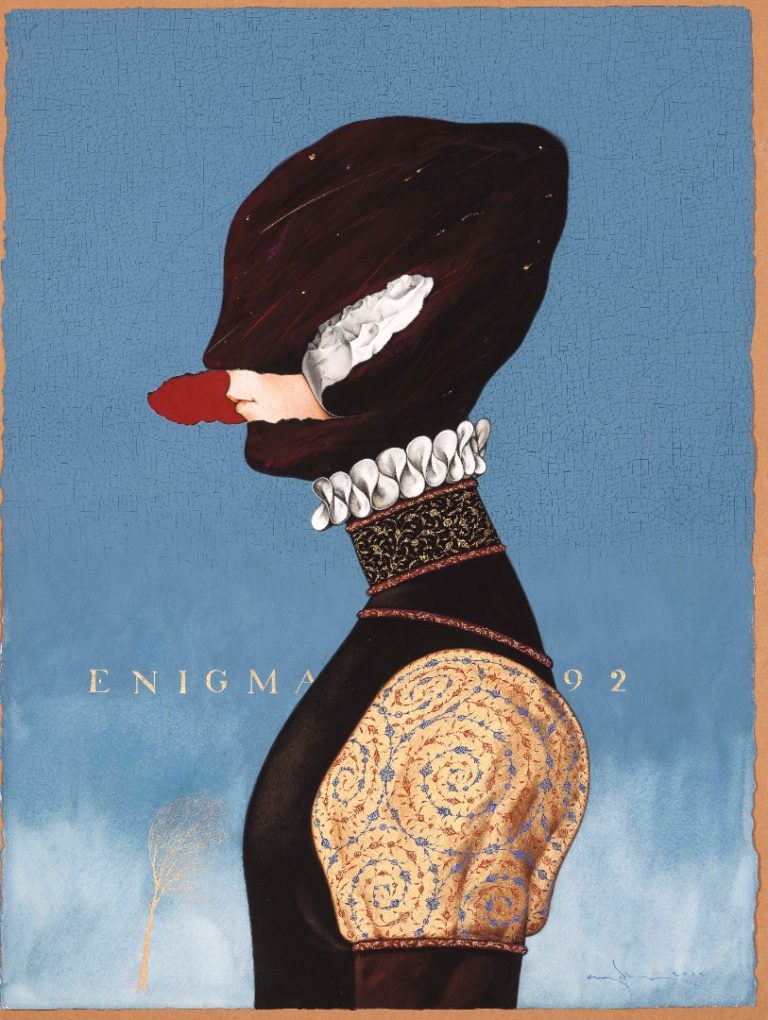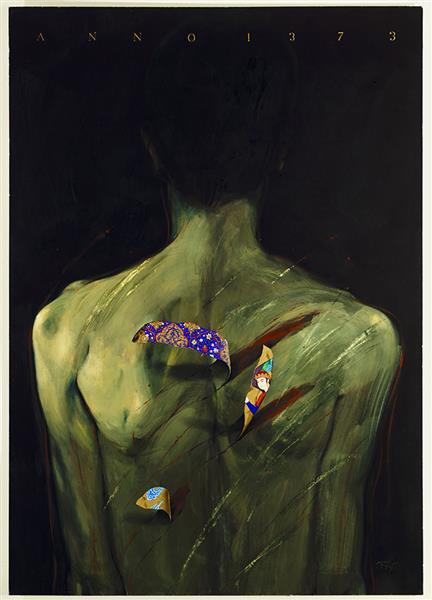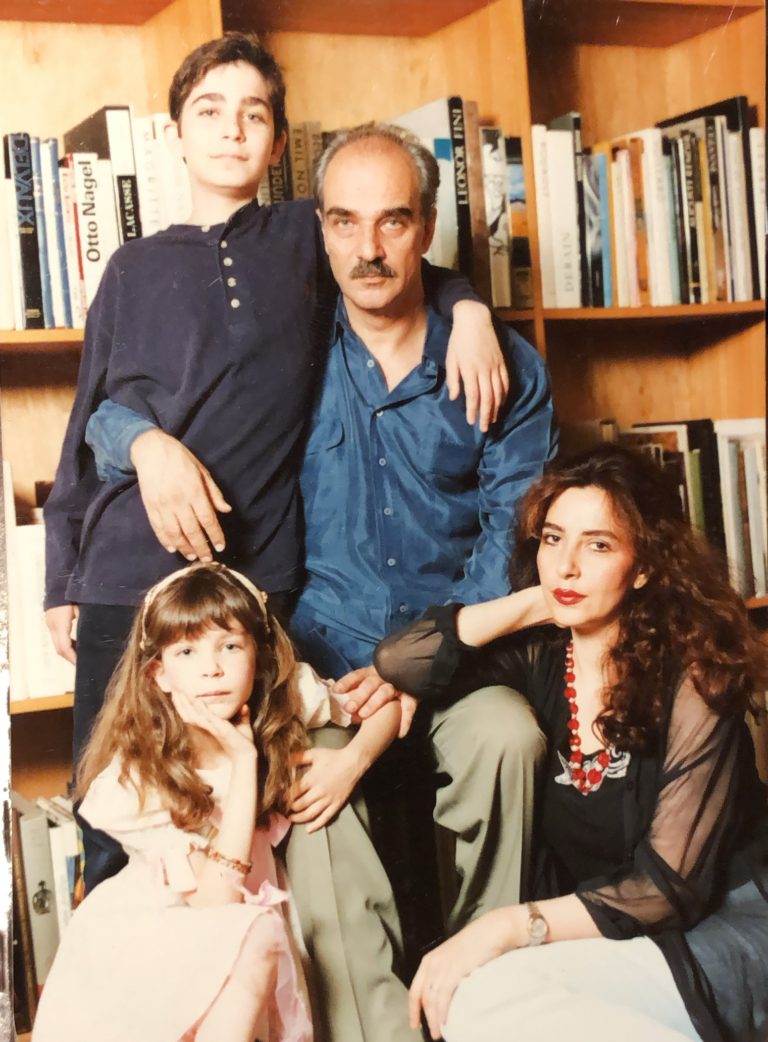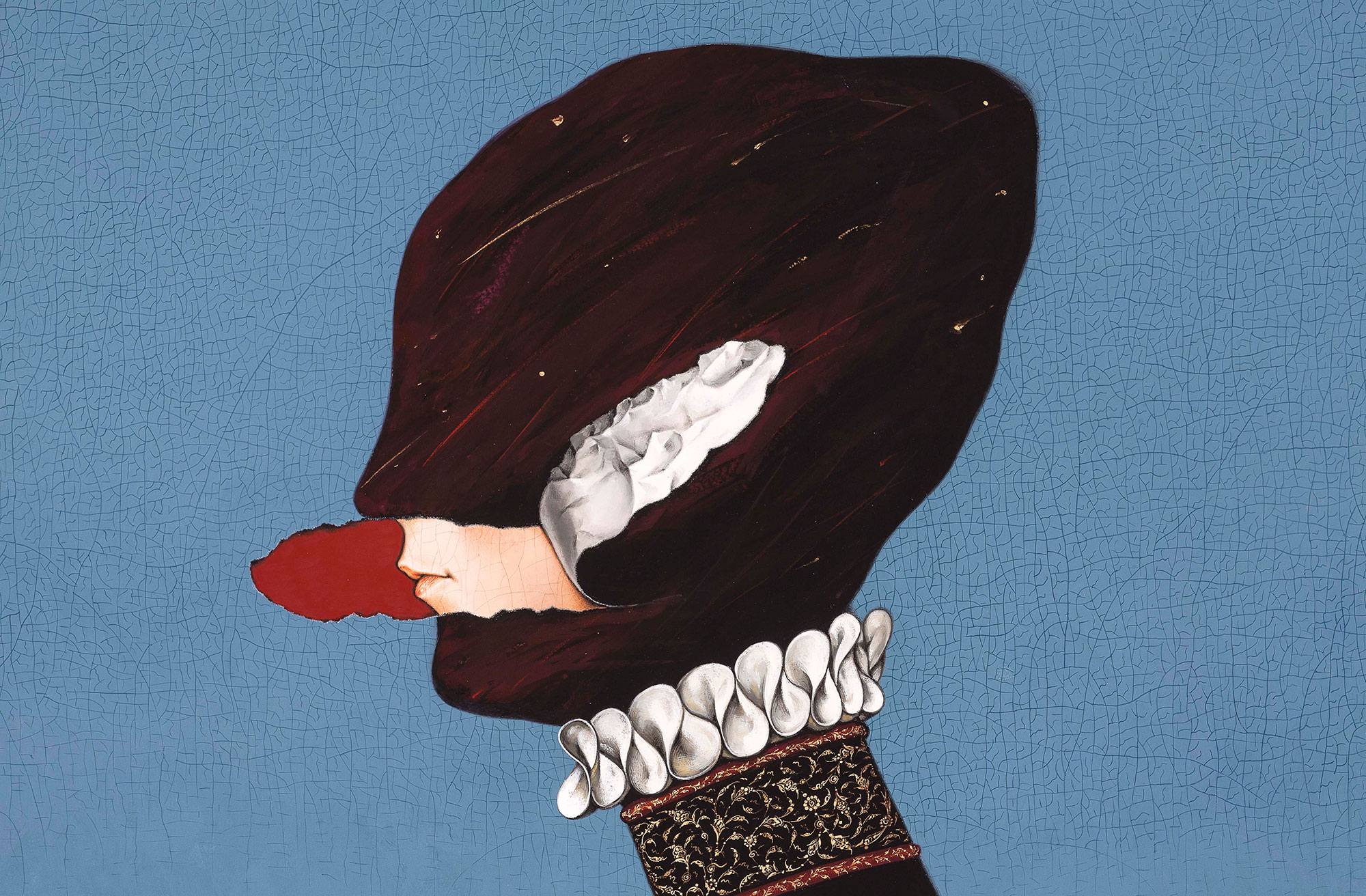
In today’s world, a tweet or news article is all it takes to destroy a reputation.
Before you make up your mind about Aydin Aghdashloo, read the facts and share with others the dangers of compromised sources and inaccurate reporting.
Who is Aydin Aghdashloo

Aydin Aghdashloo is one the most distinguished, Iranian contemporary artists in the world, and an expert in the fifteenth and sixteenth-century European painting and Islamic Art, including Persian miniatures and calligraphy. A proudly independent artist, in 1975, Mr. Aghdashloo held his first solo exhibition at the Iran-America Society in Tehran; he went on to assist in the opening of three museums before the 1979 Iranian Revolution: the Reza Abbasi Museum, the Archaeology Museum of Khorramabad, and the Kerman San’ati Museum of Contemporary Art. Throughout his career, Mr. Aghdashloo has published more than a dozen books, including eight collections of articles, three collections of paintings, and two scholarly research books on Iranian art history. His credentials include teaching positions at various eminent universities, including Tehran Alzahra University, and he has given lectures around the world at prestigious institutions such as Oxford University, the University of Toronto and the University of California.
He was the host and writer of a popular TV documentary series regarding Iranian arts and architecture before the revolution and established a private academy for art where he taught painting and art history to thousands of students over almost four decades after the revolution, when he was let go of all his official positions due to political reasons.
Mr. Aghdashloo’s diverse accomplishments are widely praised. Among other commentators, author Edward Lucie-Smith lauded Mr. Aghdashloo’s “ironic subversion of a revered western original.” And film director Abbas Kiarostami declared Mr. Aghdashloo “not just a great painter,” but a “cultural heritage himself.”
The French government, too, has recognized Mr. Aghdashloo’s tremendous achievements in his field. In 2016, he was awarded the prestigious Chevalier des Arts et des Lettres in a ceremony in Tehran.
The Allegations
While Mr. Aghdashloo has earned a reputation of honor, prestige and altruism for his works and contributions as an artist and cultural curator, he has recently been subjected to untrue and dangerous allegations related to the #MeToo movement. These allegations were recently covered in The New York Times. However, despite the supposed credibility of The New York Times, the articles about Mr. Aghdashloo are replete with falsifications, assumptions and mischaracterizations.
Through his lawyer, Mr. Aghdashloo attempted to answer The New York Times reporter Ms. Farnaz Fassihi’s questions about the allegations, however very little information was provided to allow Mr. Aghdashloo to refute the accusations directly. In addition to providing insufficient context to answer her allegations, Farnaz Fassihi was not diligent in her journalistic research, as the resulting articles contain numerous inaccuracies related to Mr. Aghdashloo’s background and work, Iranian culture, and even the statements of sources included in the article.
In addition to providing insufficient context to answer her allegations, Farnaz Fassihi was not diligent in her journalistic research, as the resulting articles contain numerous inaccuracies related to Mr. Aghdashloo’s background and work, Iranian society, and even the statements of sources.
The below outlines each accusation made in The New York Times article, as well as the details provided to Mr. Aghdashloo about the alleged offenses. Of 14 accusations listed below, seven are from anonymous sources and only four provide any sense of timing. No details nor corroborating evidence were provided to Mr. Aghdashloo related to these accusations. As such, it is very hard to prove or confirm — outside of affirming that one has never behaved in such a manner — that one did not attempt an inappropriate touch a kiss when no name is provided for the person, nor time and place of the alleged offense is offered.
Additionally, while the article paints Mr. Aghdashloo as a sexual predator, the vast majority of accusations relate to kissing, comments or touches, and often are alleged to have taken place in public spaces like galleries or classrooms. None of the encounters are described as rape or abuse, and they are all alleged to have happened many years ago. The one accusation of molestation provides no details on the alleged abuse. The severity of the accusation and offense is based on the alleged victim’s definition of molest, which is never explained.
As a man who takes great pride in his love for the people of his country, and who has made himself accessible to people from all walks of life through his lectures and open-door policy at his studio, Mr. Aghdashloo has not taken the recent accusations lightly. He has admitted to being imperfect and has apologized for ever having made others uncomfortable. And while wrong, making someone uncomfortable is not a crime nor tantamount to rape, and should not be punished through the destruction of one’s livelihood and that of their family.

Facts about Aydin Aghdashloo and The New York Times Article
Given the complexities of Iranian society and government, and despite his championship and celebration of Iranian culture, Aydin Aghdashloo and his family have repeatedly found themselves the subject of smear campaigns, intimidation tactics and false accusations from conservative Iranian state media and a conspiracy theorist blogger with no documented journalistic credentials.
The following are facts about Aydin Aghdashloo, his work and some of the attacks against him.
FACT
Aydin Aghdashloo has sued Afshin Parvaresh in the United States
In 2019, Afshin Parvaresh, an extortionist, convicted defamer, puppet-blogger, and alleged rapist, was sent a cease and desist letter related to his attacks and slander against Aghdashloo and has been hiding to avoid legal accountability for his actions. As he is now apparently a resident of the U.S., Aghdashloo’s lawyers at the Kronenberger Rosenfeld law firm filed a lawsuit against Parvaresh in the District Court of Southern Ohio on June 14, 2021.
This lawsuit is a critical step to hold Parvaresh accountable for his torrent of lies and allegations against Aghdashloo. We are encouraged that despite Parvaresh’s number of failures to appear before the court in Iran and the U.S., he will finally have to speak for his action and lies — as he has previously claimed that he is ready to do so on his social media platforms.
FACT
Aydin Aghdashloo has never assaulted or raped anyone, nor has he ever been charged with any sexual or criminal acts.
Contrary to the allegations reported in The New York Times and other outlets, Aydin Aghdashloo has never been accused of rape nor faced any legal inquiry into his behavior or conduct. There have also been no complaints or reports filed against him with police, at his academy or through third-party abuse prevention organizations.
FACT
One of the only named sources in The New York Times article, Solmaz Naraghi, has publicly stated that the reporter, Farnaz Fassihi, misrepresented her words.
A retraction was shared on Solmaz Naraghi’s social media channels. As a result of this misrepresentation, Farnaz Fassihi added the word “verbal” to the abuse allegations in the Persian-language New York Times article. Yet, the correction was not called out in the Persian-language article and no similar edits were made in the English-version.
Furthermore, Farnaz Fassihi grossly mischaracterized the supposed incident and severely exaggerated the statements of Solmaz Naraghi (read about it below). After Solmaz Naraghi shared social media posts clarifying her statements, Farnaz Fassihi confronted her as to why she would publicly contradict Fassihi’s story.
FACT
One of the women referenced in the article has stated she saw no abusive behavior and, what she meant by “rape” was not of sexual nature.
Three days after posting comments on social media that she believed Aghdashloo was “capable of rape,” Laleh Sabouri, an actress working regularly for the Iranian state media network IRIB, tweeted on August 31, 2020 clarifying her definition of rape:
“Rape is when I’m not interested and you keep staring at me. Rape is when I’m not in the mood and you keep talking to me.”
FACT
Despite assertions to the contrary in The New York Times article, the reporter never received confirmation of abuse from 45 individuals.
Farnaz Fassihi claimed in her article that 45 people stated that “Mr. Aghdashloo’s behavior toward young female students had been known in Iran’s art circles.” The way that the article is written makes it appear that there have been 45 separate accusations. This is categorically untrue. Additionally, sources and documentation of these 45 interviews have not been provided. Fassihi fails to clarify what she means by “behaviour towards young women” and since none of the people are named it is impossible to verify the behavior they referenced.
FACT
Contrary to what the article claims, there is no teaching assistant who has worked for Aghdashoo for 12 years.
While The New York Times article includes claims from an anonymous teaching assistant, no employment records match the tenure claimed. The only long-term TA of the academy has confirmed in media interviews that she never witnessed the behavior alleged in the article.
FACT
Students of Aydin Aghdashloo have publicly affirmed the safe and positive environment at the academy and that they never saw the behavior suggested.
Following the initial allegations shared against Aydin Aghdashloo, a group of more than 150 former students, many of them women, published an open letter affirming the positive and professional environment provided by Aydin Aghdashloo.
FACT
The encounter described by Sara Omatali in The New York Times article is misleading and questionable.
The New York Times article includes accusations from Sara Omatali claiming that when she visited Mr. Aghdashloo for an interview, he “greeted her while naked with a robe draped on his shoulder, forced a kiss and pressed his body on hers.” Mr. Aghdashloo has previously been photographed in his long Moroccan robe which he always wears at his studio and that is fully stitched up at the front. He emphatically denies having ever greeted Mrs. Omatali, or anyone, without being appropriately dressed, and vehemently affirms that he never attempted to kiss, inappropriately touch or otherwise force himself on Mrs. Omatali or anyone else.
According to her account on social media, after this incident, Mrs. Omatali accompanied him to a museum, at which time the below picture was taken.
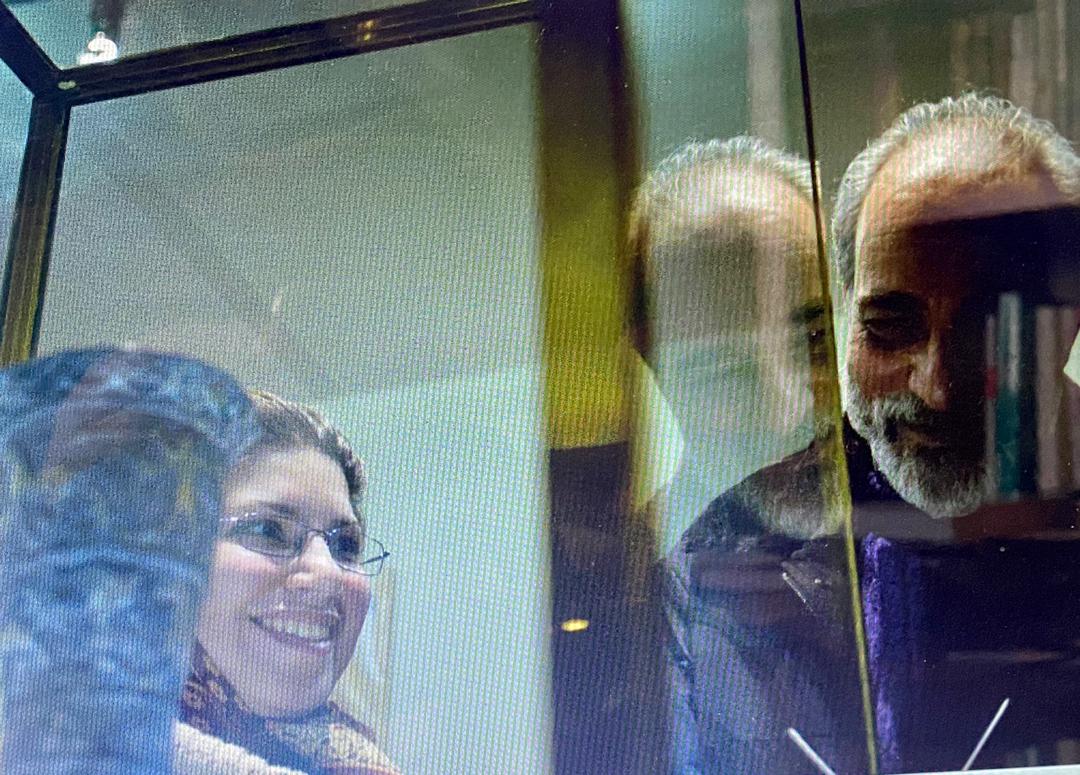
FACT
As recently as 2018, Sara Omatali posted positively about Aydin Aghdashloo, his support of women, and his work as a dissident.
In 2018, while commenting on the protests by Iranian women, Sara Omatail shared on Twitter an anecdote recalling a phone conversation she had with Aydin Aghdashloo. She recounts an incident where the conservative newspaper Keyhan named Aydin Aghdashloo, among others, responsible for a “Velvet Revolution” against the regime. According to her tweet, Aghdashloo told Omatali: “What they don’t realize is that Iranian women…are the revolutionary ones.” The following tweet further shows her support for Aydin Aghdashloo.
FACT
There was a correction issued from The New York Times based on inaccurate reporting by Farnaz Fassihi. Abuse Watch never received any complaints related to Mr. Aghdashloo.
On October 24, 2020, the day after The New York Times article was published, The New York Times issued a correction to the article as the reporter “imprecisely paraphrased [a source’s] comments regarding the recipient of student complaints about Aydin Aghdashloo’s behavior.”
FACT
Aydin Aghdashloo and his family have endured years of attacks and smear campaigns due to his views on the Iranian government and equality in Iran.
Aydin Aghdashloo has been criticized and maligned in state-controlled media over the years due to his Pahlavi-era position, political views and work. As late as 2018, in a state-owned conservative Kayhan Newspaper article, Mr. Aghdashloo was accused by the Basij Organization and Kayhan, as well as by the Iranian Judiciary, of being a “CIA agent” and “anti-revolutionary for receiving the French Government Legion of Honor Award.” He is also called an “Israel sympathizer.”
FACT
The reporter, Farnaz Fassihi, has gone beyond reporting on Aghdashloo to implicate his family, including his ex-wife
Following the release of the article, Farnaz Fassihi reached out directly to Aydin Aghdashloo’s collaborators, sharing the article and questioning their continued work with him, reportedly with an intimidating tone.
FACT
The main source leveraged in the article, Afshin Parvaresh, has been convicted of defamation multiple times and is accused of rape.
Blogger and conspiracy theorist, Afshin Parvaresh, who served as the main source of information for Farnaz Fassihi’s article based on Farnaz’s own account, has a personal vendetta against Mr. Aghdashloo and has waged a consistent smear campaign against him for more than five years. He has been found guilty on numerous court cases previously for a variety of crimes, including defamation, and is accused of rape by an Iranian-Canadian human rights activist.
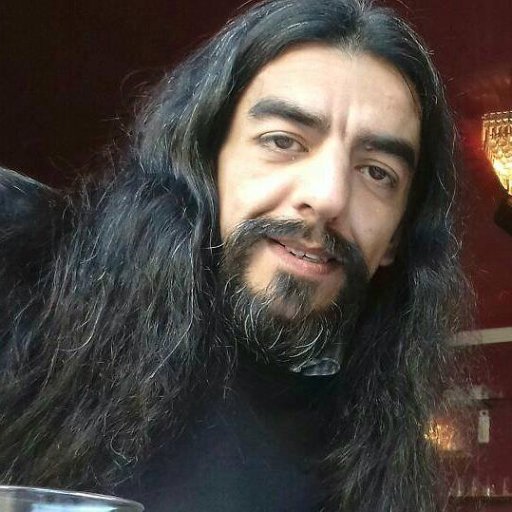
Photo sourced from Twitter
FACT
Aydin Aghdashloo and his family have no special ties to the Iranian government nor influence to enable the intimidation of others.
Contrary to allusions made in The New York Times article, the Aghdashloo family has long been criticized by the Iranian government, with Aghdashloo being detained for interrogation on numerous occasions and his daughter being unable to return to the country. The family wields no special power nor connection to the government.
FACT
Aydin Aghdashloo has no ties to Astan Qods Razvi.
Any assertions implying connections between Aydin Aghdashloo and the “ruling elite” are categorically false. As an art expert, Aydin Aghdashloo has written hundreds of articles, book introductions and reviews. In 2013, Aghdashloo was asked by a former Artistic Associate of Artistic Creations Institution to write an introduction for a book of Qur’an of Ibrahim Sultan, which is a masterpiece of Iranian art belonging to the collection of Museum of Astan Quds Razavi.
FACT
Aydin Aghdashloo’s students included a daughter and grandchildren of Iranian religious figures.
Mr. Aghdashloo has taught a large number of students in his academy from all walks of life and many of these students were from religious families. The fact that such religious female students with strong beliefs were also a part of his classes shows that the environment of these workshops was conducted in a professional manner with respect to his female students. He has taught thousands of students over the course of his career.
FACT
Afshin Parvaresh created a doctored video of Mr. Aghdashloo’s former wife, Hollywood actress Shohreh Aghdashloo, in an attempt to further attack and disparage Mr. Aghdashloo.
After Mr. Aghdashloo’s former wife, Hollywood actress Shohreh Aghdashloo, shared a message in support of Mr. Aghdashloo stating that the man she knew would never behave in such a manner, Afshin Parvaresh posted a doctored video of her through his social media that gave the appearance of her standing against women.

FACT
The New York Times lost two awards due to false reporting and lack of fact checking.
In December 2020, The New York Times returned an award and had another withdrawn for an international story about the Middle East due to false reporting. The editor responsible for this piece, Michael Slackman, is the same editor currently overseeing reports by Farnaz Fassihi, including the story disparaging Aydin Aghdashloo. Farnaz Fassihi has a documented history of issuing corrections to her stories involving Iran, including corrections in the Aghdashloo piece.
As you read these facts, ask yourself why would a reputable reporter publish a story with such inaccuracies
I was [his] students for 11 years, and didn’t see anything but good manners and respect.
Hundreds of former students of Mr. Aghdashloo rallied to his defence, with testimonies about the time they spent with him; Most of them women.
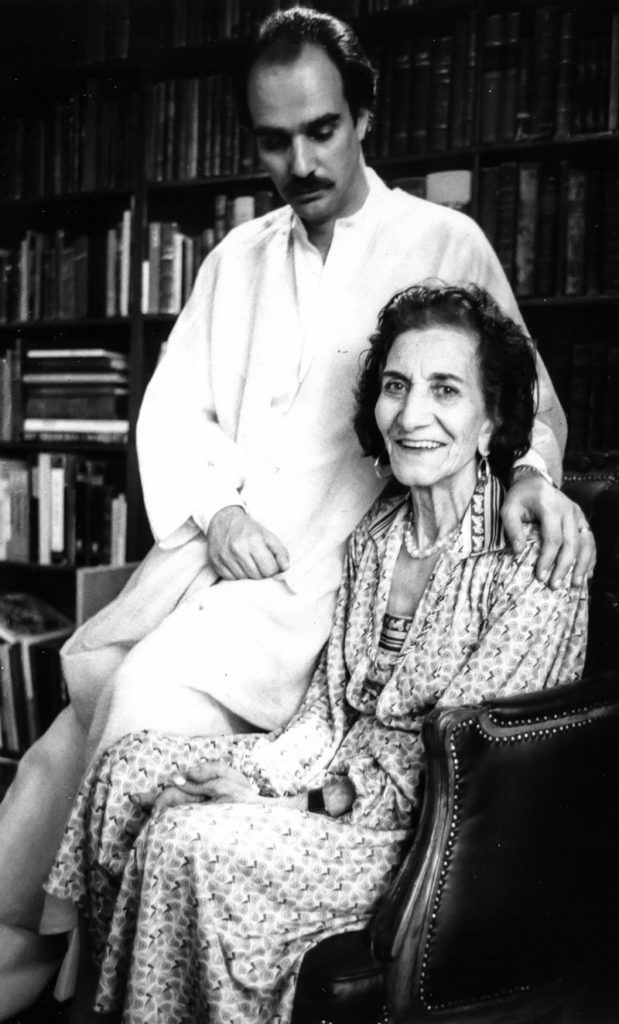
Aydin Aghdashloo’s Statement
The allegations of sexual abuse against me are full of significant inaccuracies, mischaracterization, and fabrications. To be clear, I have always sought to treat people with respect and dignity and I have never abused, assaulted nor taken advantage of anyone. I have been fortunate enough to encounter countless people in my 65-year career from all walks of life and there has never been any complaint or inquiry into my behaviour. I have always worked as an independent artist and, following the revolution, have earned my living not through credits and connections to the state but through my art.
Treating people with kindness, warmth, and empathy is core to my character, but I am not a perfect man. If my behaviour or actions have at any time brought discomfort or distress to anyone that has crossed paths with me, I sincerely apologize. I believe that it’s the duty of men in my position to take responsibility for their actions, learn from them, and most importantly, set an example. I and my family always have and always will stand by women and champion the importance of equality everywhere, and especially in Iran.
In regards to disparagements against my academy, we are proud that the academy was representative of the different segments of Iranian society. Students from religious conservative backgrounds were welcomed and worked side-by-side with students from liberal families. More than 150 of these students have so far attested to the safe, constructive and professional environment of that academy in a publicly released statement.
Lastly, in light of this experience and these accusations, I want to undeniably affirm my support of women in Iran, around the world, and specifically the #MeToo movement. While this experience has been beyond challenging, and with complexities that have often been overlooked, it has given rigor to a much-needed conversation around equality, consent, and accountability, that we must examine at every level. Just as my art has spoken to the delicate nature of individuality, destruction, fairness, and the human soul, I endeavor to use this situation to do the same. I am a deep believer in agency and individual choice, but human relationships are a sensitive balancing act. I’m thankful to be able to understand and talk about the depths of my responsibility as a human being.
A Self-Promoting Attack
The #MeToo movement has been a critical and necessary rebuttal to the decades of harassment, mistreatment and sexual attacks that women all over the world and across industries have endured. The stories and experiences of these women are important and need to be heard and understood so that they drive the necessary change in policies, accountability and societal norms to ensure a more equitable world.
The New York Times articles by Farnaz Fasihi appear to serve the interests of #MeToo but in reality cast dispersions on it. By publishing an article that she knew was inaccurate, by refusing to accurately quote her interviewees and by employing a source with the stated mission of destroying Mr. Aghdashloo (and who himself has actually been accused of rape), Farnaz Fassihi has perverted the focus of her article in efforts of raising her profile.
Such an extensive attack on an individual like Aydin Aghdashloo, if it were relating to someone in the country of Ms. Fassihi’s residence, the United States, would likely take months, and with strong fact-checking requirements. However, this article was produced in a matter of weeks, by a journalist with no access to the country in question, Iran, and the weakness and anonymity of her sources were justified by Mr. Aghdashloo’s non-existent ties to the regime.

Photo sourced from PBS.org
…this article was produced in a matter of weeks, by a journalist with no access to the country in question, Iran, and the weakness and anonymity of her sources were justified by Mr. Aghdashloo’s non-existent ties to the regime.
Mr. Aghdashloo provided pages of context to her questions related to this article, never once shying away from the issue. But the refusal to investigate and report this issue with the nuance and accuracy it necessitated has turned an attempt to focus on an important issue into a dangerous attack and hit-job on a family.
An Inherited Story of Misinformation
Per her own comments on the story, Farnaz Fassihi has confirmed that she learned of some of the supposed allegations against Mr. Aghdashloo from a social media post from Afshin Parvaresh, who is a known conspiracy theorist and has accused dozens of cultural figures of a myriad of baseless claims.
An Illusion of Power
As outlined above in the section “About the Allegations,” none of the accusations amount to rape or assault. However, to paint the picture that Mr. Aghdashloo is a predator with unlimited ability to attack as he desired, Farnaz Fassihi purposely fabricated a level of power that Mr. Aghdashloo never held.
Driving Fear Through Extreme Exaggeration
To further elevate the importance of her reporting, Farnaz Fassihi drew in the spektor of Harvey Weinstein. A manipulative comparison that invokes strong feelings in the reader without any proof that Mr. Aghdashloo ever assaulted anyone or wielded power over their careers.
Construction of a Defaming Article Based on Falsehoods
Given the less than professional way that facts and sources were handled in The New York Times article, Farnaz Fassihi wrote the article in such a way as to obscure the flimsiness of the reporting while manipulating the reader into thinking the worst of Mr. Aghdashloo.
Farnaz Fassihi and Afshin Parvaresh sought to inflict damage instead of imparting truth and understanding.
Accountability and The New York Times Article
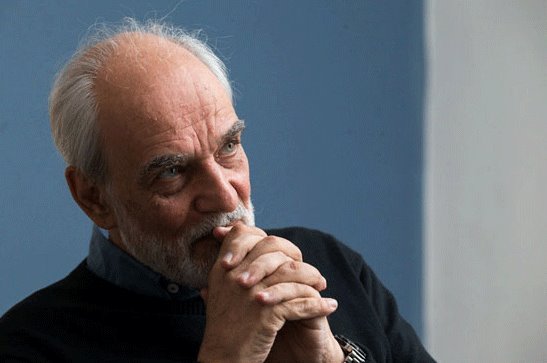
In many ways, The New York Times is shielded from accountability and responsibility for its reporting and the impacts it has on others thanks to a multi-million dollar insurance policy to cover legal costs.
Despite the false assertions of the article, Mr. Aghdashloo is not a wealthy man and the costs of taking on the Times is truly prohibitive. However, the facts still matter and Faranaz Fassihi and The New York Times should not be allowed to use questionable sources, malicious quoting and far-fetched assumptions to destroy lives and livelihoods.
Given the prohibitive legal costs of holding The New York Times accountable and the careless way the truth has been handled by the media thus far, this website was the best recourse for addressing this issue and correcting the misinformation surrounding it in an open and transparent manner.
Additional Coverage
The Truth Comes Forward: Law Suit Filed Between Agdashaloo v. Parvaresh
Iran Art News: Why do Aghdashloo fans consider the NYT report unfair?
Women in the Art of Aydin Aghdashloo
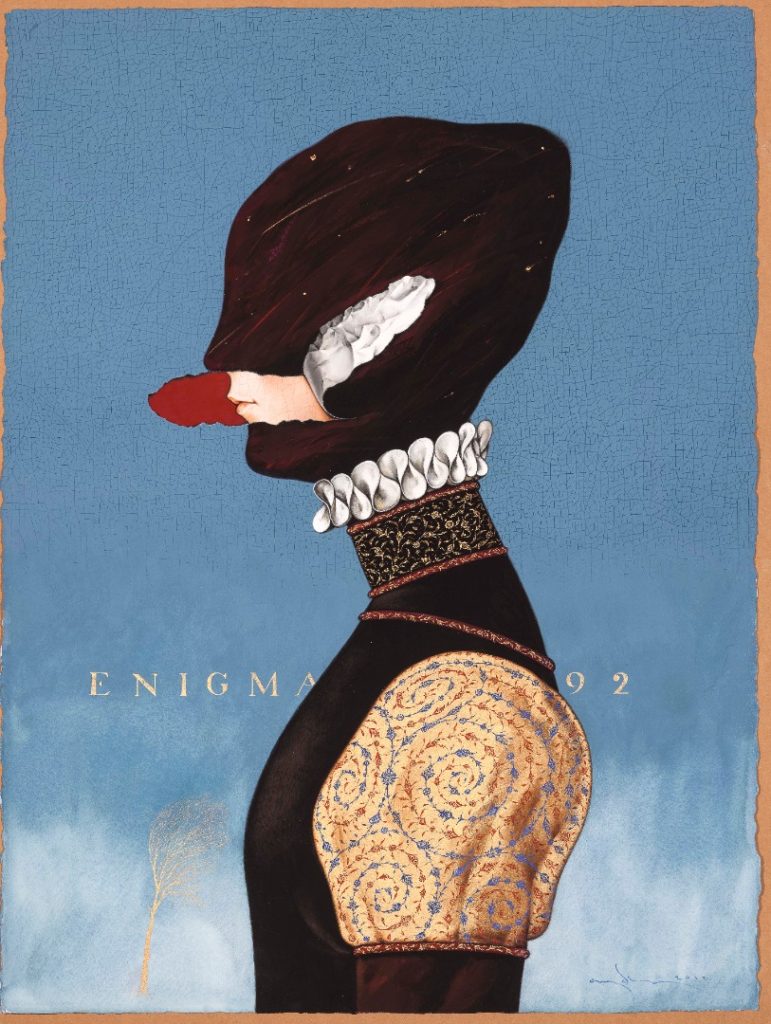
Aghdashloo’s work has explored a variety of aspects of Iranian arts and culture but has particularly honored and addressed the role of women in Iranian society. As one of the few men in his generation to address this topic, his post-revolution series, Memories of Destruction and Enigma, featured renaissance-era inspired portraits of women in various states of symbolic oppression and injustice. Their faces scratched or wounded, mouths covered, and identities annihilated.
In continuation with his Memoirs of Destruction series, Mr. Aghdashloo was preoccupied with the ways in which the “ignorance of the world around was destroying all that was just and beautiful.” This manifest reflection of what Iranian society was dealing with emotionally, made his paintings not just popular in the art circles, but also amongst the Iranian public.

